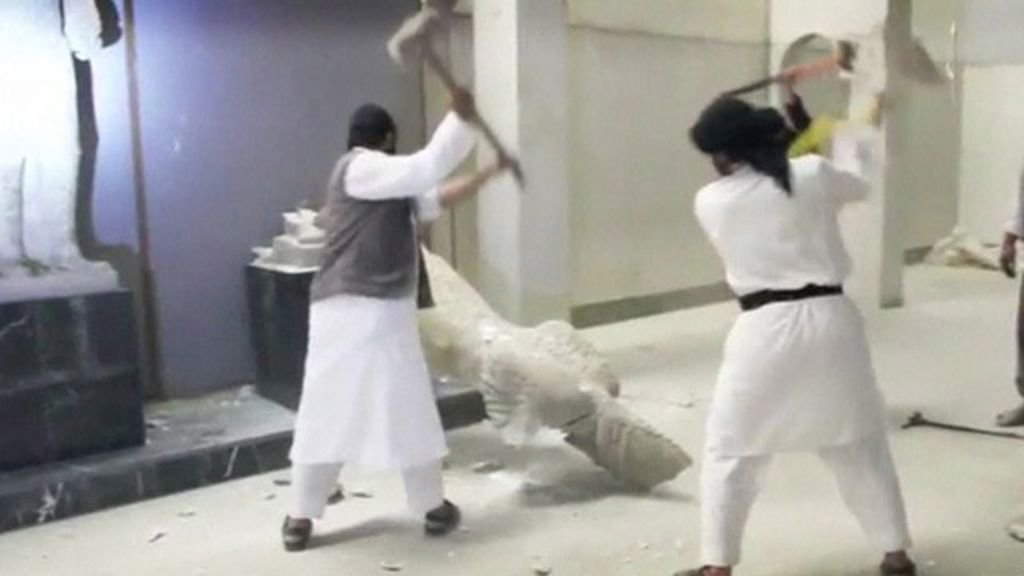The destruction of cultural heritage as a consequence of sectarian conflicts, from Pakistan to Libya, has aroused the world’s attention. The list of tragedies includes the Buddhas of Bamiyan, the Baalshamin Temple, looting of stupas, the Iraq Museum, the spectacular destruction in Mosul, the demolition of the Dair Mar Elia monastery, and clandestine excavations choking archaeological sites. Public protests have underscored the need for action to protect cultural heritage through legal instruments and conventions, surveillance, and misplaced cultural-military interventions. Can liconoclasty and looting be stopped? Not where states fail. Can destruction be curbed? Perhaps. Are there new conventions, law enforcement, indictments? Not only.
Cultural heritage is best protected through national management systems, but where there are sectarian groups struggling to impose themselves and states fail, these management systems collapse. LIraq, Syria and Afghanistan demonstrate that during violent conflicts, the international community has no power to intervene. Groups such as ISIS are not only heedless of international agreements and opinions, they defy conventions to provoke international reactions. UNESCO Director Irina Bokova’s condemnation of the destruction of Palmyra is a case in point. By bringing out the limelight of the global community, ISIS has achieved the purposes of its propaganda. Destruction does not arise only from the action of irrational fanatics, but is part of a methodical agenda. ISIS-style lyconoclasm (no matter whether motivated by a desire to do cultural cleansing, or propaganda purposes) is professionally orchestrated and manages to grab headlines, but it is not the most important cause of destruction. In contrast, the looting underlying the antiquities trade seems to be a much more significant factor.
 |
| Isis militiamen destroy artifacts from the Mosul Museum (2014) |
Turning antiquities into fetishes and converting archaeological material into decontextualized art is essential to create a market, while the Internet and the liberalization of the global market create an effectiveinfrastructure for trade and payment. Since illicit trade in cultural objects fuels looting, countering this market is probably the most important measure to protect cultural heritage in disrupted states. And since the trade generates economic resources for jihadists and criminals, curbing it also means limiting the flow of money that funds violence. The illicit trade consists of the suppliers (looters and traffickers), the dealers (merchants and academics), and the consumers, represented by collectors. When a state fails, there are few obstacles for suppliers. Preventing distribution through enforcement of laws, through legislation and international agreements, is important, but conventions, customs controls and surveillance alone cannot effectively curb the illicit market, especially in those countries that lack a structure such as the Carabinieri Command for the Protection of Cultural Heritage. The last links in the market chain (the collectors and academics who authenticate, preserve and publish the objects) are sensitive to the public eye.
So, having researchers who are required to meet ethical guidelines that prohibit publishing or exhibiting materials whose provenance is unknown may place limits on an essential player in this market. Moreover, if dealers and collectors were required to document the legitimate acquisition of objects, this market would fail. A case in point is Norwegian collector Martin Schøyen, who had acquired materials from Afghanistan, Pakistan, and Iraq. The involvement of public opinion crippled the market that fed Schøyen’s collection of Buddhist manuscripts, and as a result the looting of these objects in Gilgit stopped. The trade in Iraqi materials also seems to have collapsed. Finally, the result was that the Norwegian government did not purchase Schøyen’s collection, public institutions ended their support for it, four countries demanded the return of the objects, and ratification of the UNESCO Convention concerning Measures to be Taken to Interdict and Prevent the Illicit Import, Export and Transfer of Ownership of Cultural Property was expedited.
This contribution was originally published in No. 6 of our print magazine Finestre Sull’Arte on paper. Click here to subscribe.
Warning: the translation into English of the original Italian article was created using automatic tools. We undertake to review all articles, but we do not guarantee the total absence of inaccuracies in the translation due to the program. You can find the original by clicking on the ITA button. If you find any mistake,please contact us.